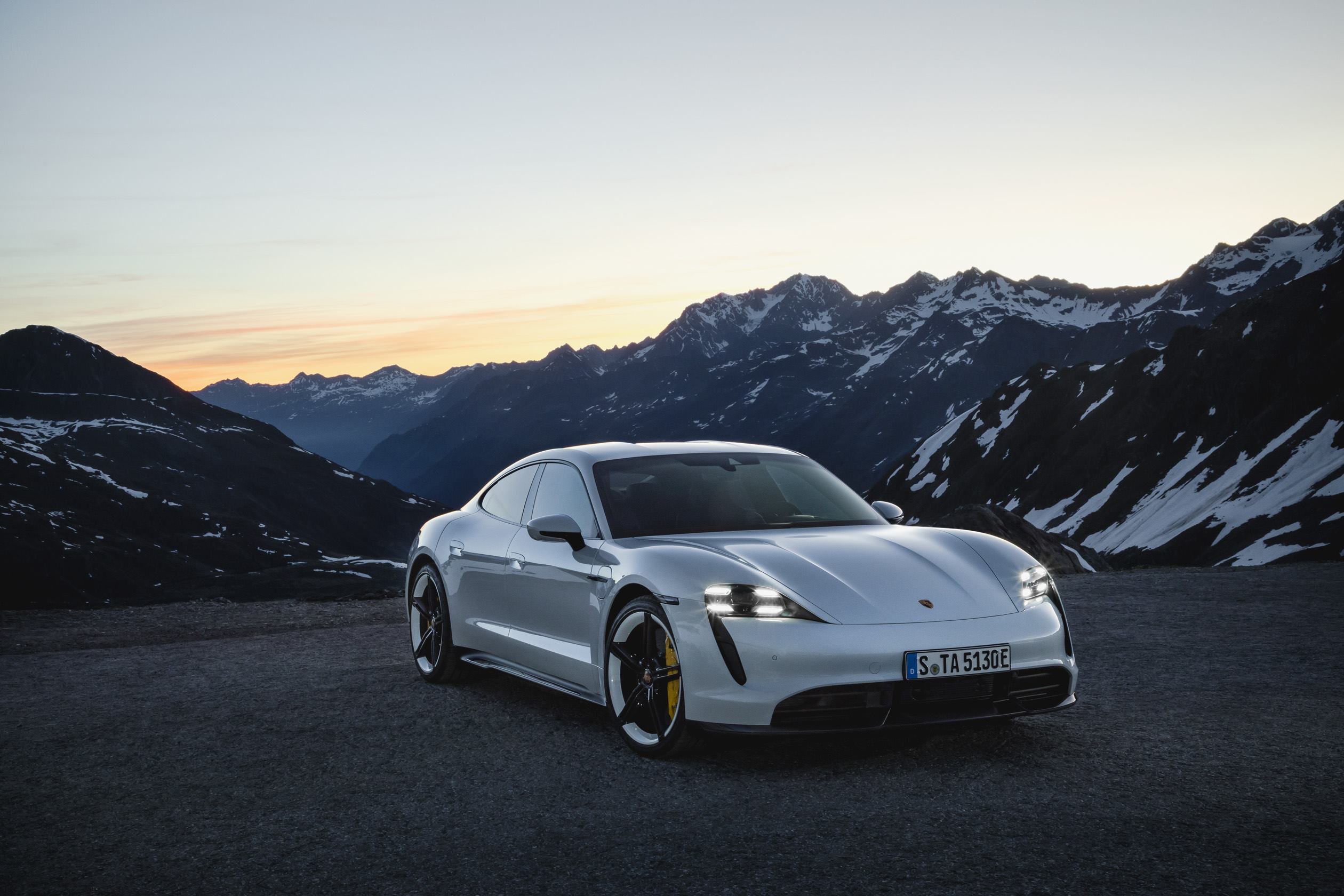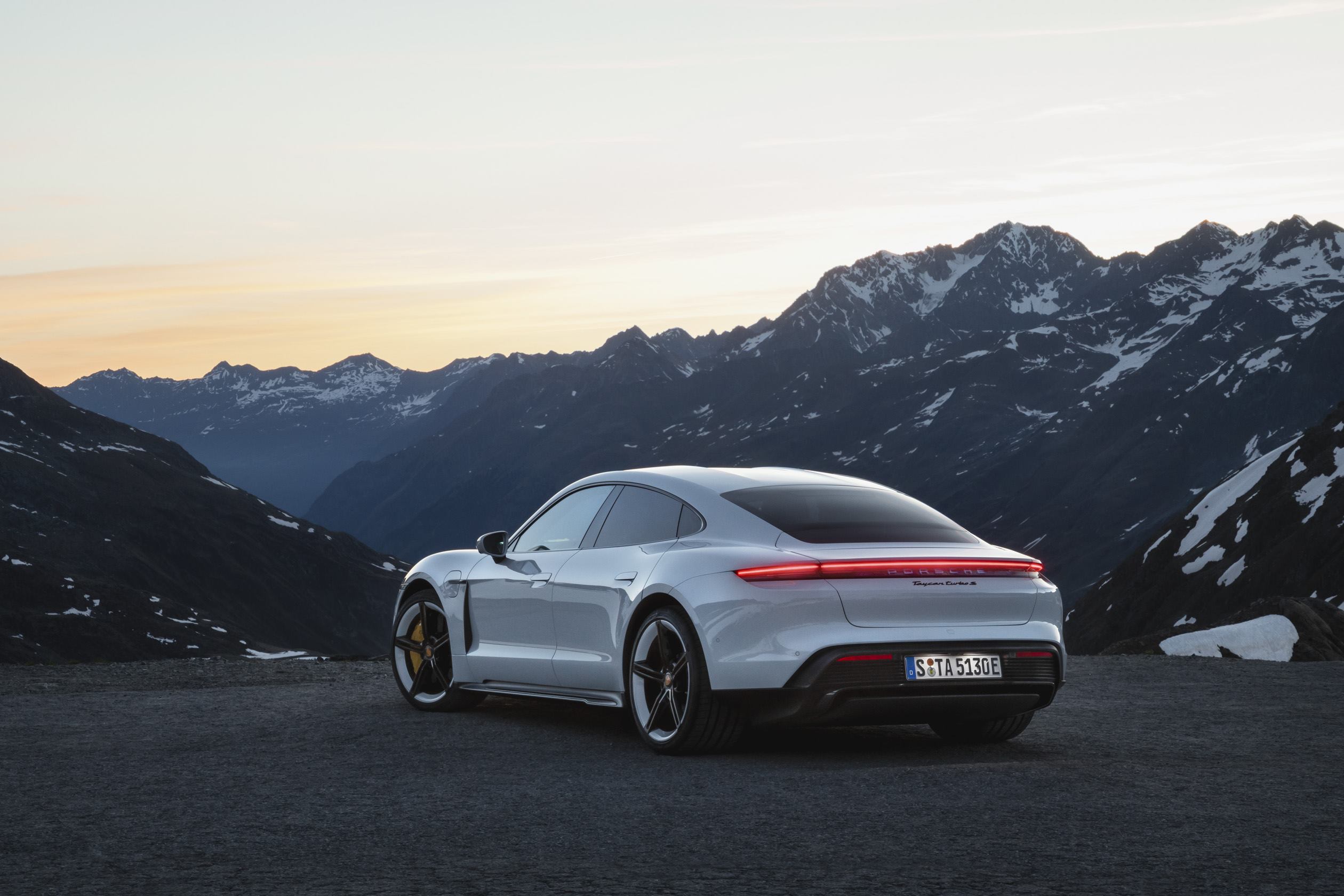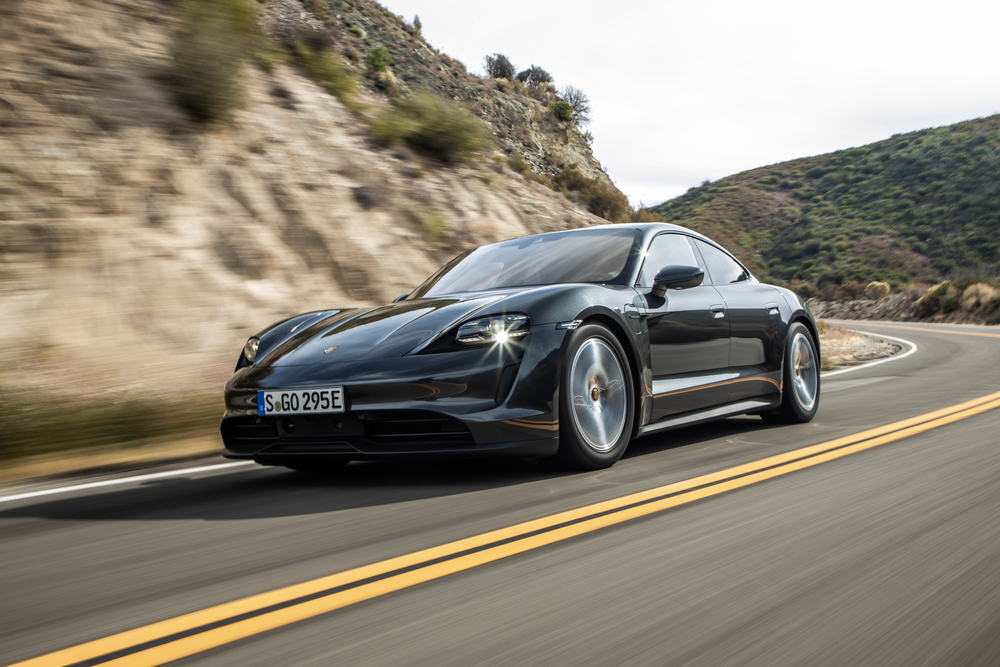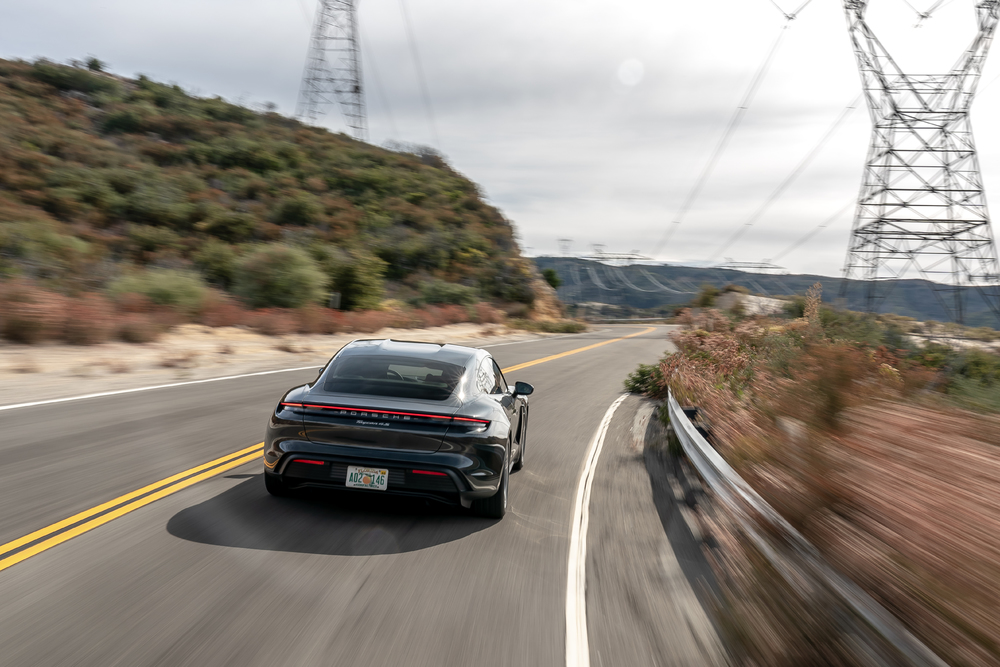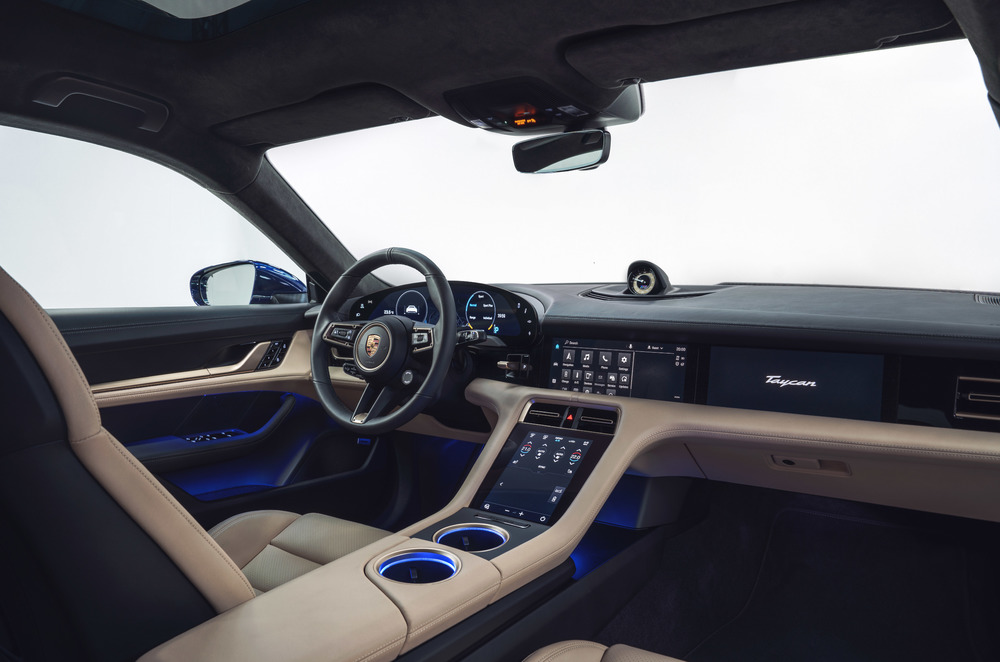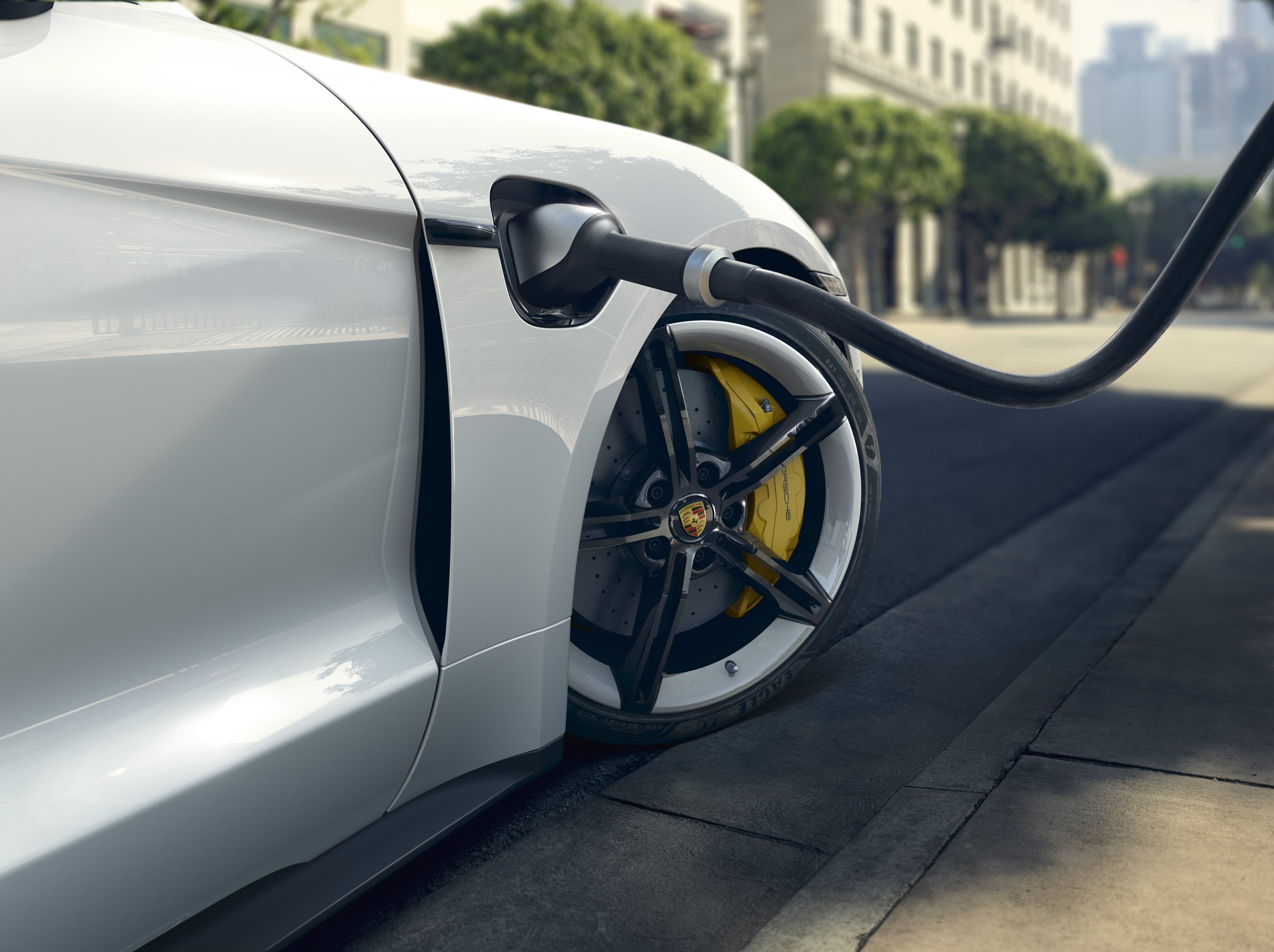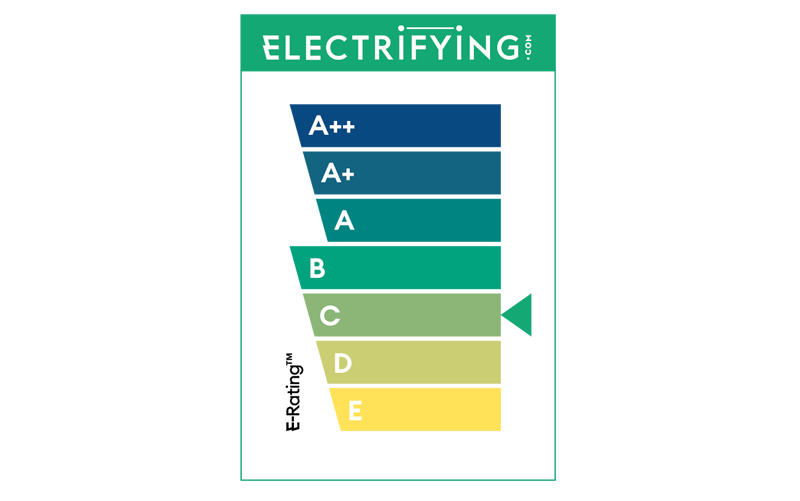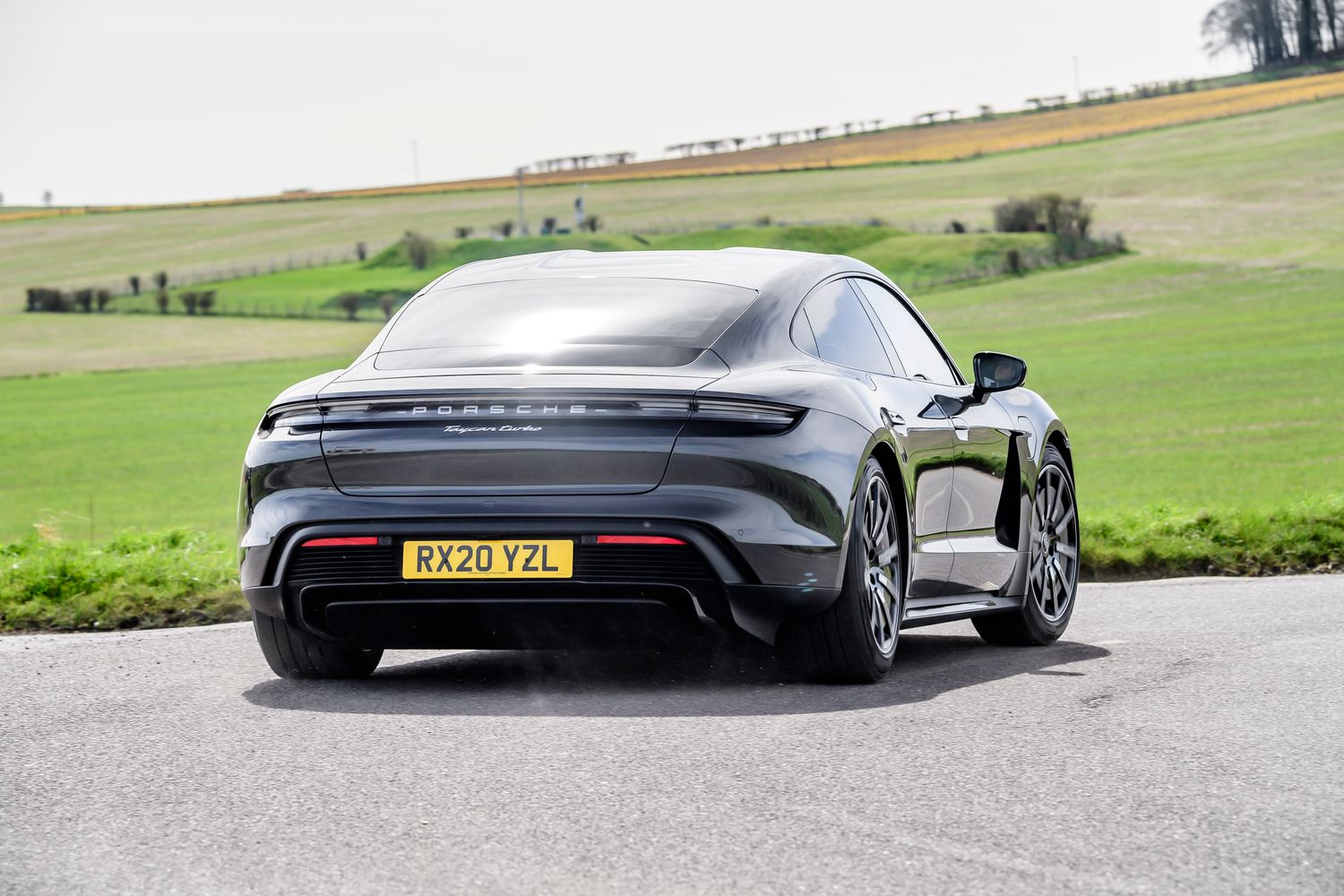Performance
There are four Taycan models – the Taycan, 4S, Turbo and Turbo S, and they vary in performance from fast to almost unnecessarily fast. Even though a ‘turbo’ usually suggests a car has a turbocharger, in the case of the Taycan it just denotes they’re the performance versions. They are powered by two sizes of battery – a 71kW and a 84kW, named the Performance Battery and Performance Battery Plus. The entry-level Taycan and 4S has the Performance Battery as standard and can be upgraded, while the Turbo and Turbo S have the Performance battery Plus to unlock more ability to go fast – or further.
Perhaps the most interesting part of the system is the inclusion of a two-speed gearbox on the rear axle. Normally electric cars don’t need them as they can spin faster than a traditional engine and are much more flexible in the way they produce power. But by adding an extra ratio it means the Taycan can still have shocking acceleration while being refined and efficient at higher speeds. It’s good news for anyone who does a lot of motorway driving.
Drive
The Porsche’s best feature is the way it drives though. It might be a pure electric car, but it still feels like a Porsche in the way it goes around corners. It’s very well balanced and handles more like a traditional sportscar than a heavy electric vehicle or SUV. That’s not to say it’s lightweight - the Taycan is still 2.3 tonnes (about the same as a big conventional 4x4 like a Land Rover Discovery), but doesn’t feel like it when you drive. The steering especially feels far more natural than in a Tesla and it gives you confidence to drive quickly knowing you are in control.
Unlike most electric cars, there’s no braking effect when you lift off the throttle pedal. The car will still recapture the energy created when you slow down by turning the motors into generators to put power back into the battery, but it’ll only do it when you hit the brake pedal.
All Taycan models with the exception of the newly arrived entry-level model have four-wheel drive with a motor on both axles. The entry-level model only has the rear motor, which makes this version lighter and, for us, a slightly more engaging car to drive. The entry level model also does without air suspension, which is standard from the 4S upwards. However, you can still add it as an option and still have a cheaper car than the the 4S. Our test car came with the optional air suspension and we found it to be a great system that delivers a great ride and surefooted handling in corners.











